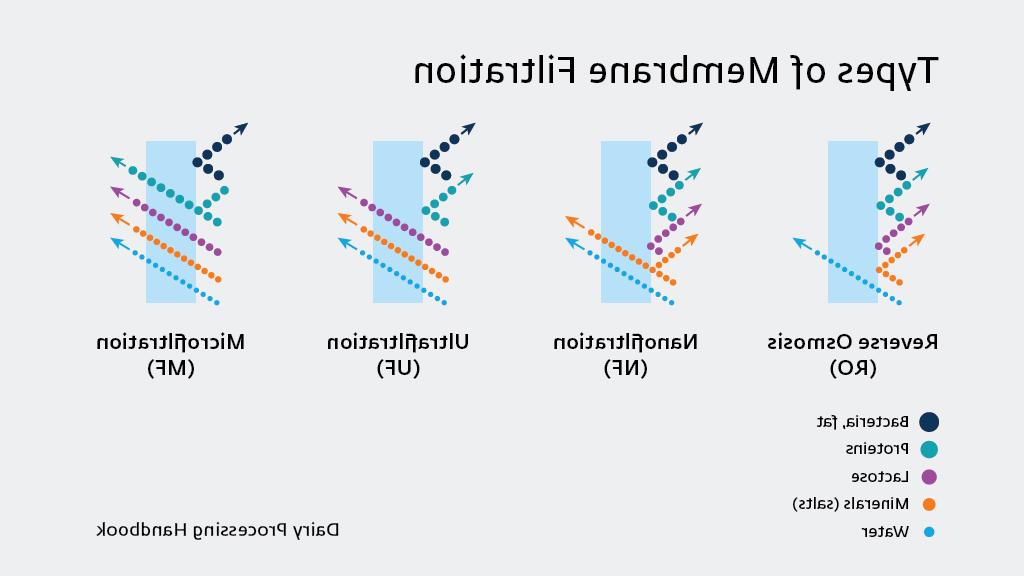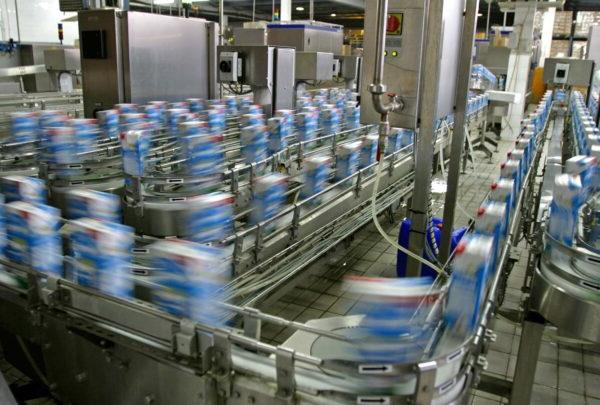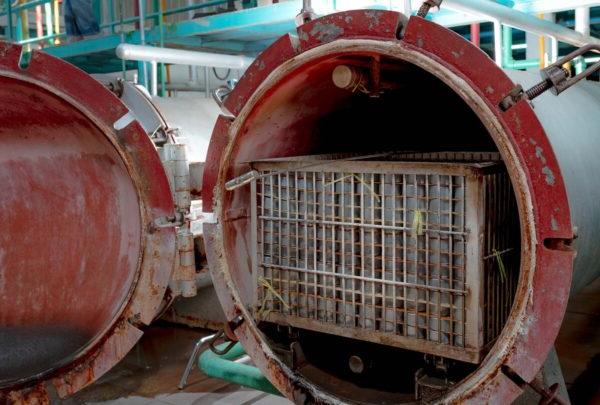Liquid whey is a major component of cheese processing, with about 90% of the initial cheese milk becoming what is called sweet whey as a byproduct.
Whey was long considered a waste stream that cheesemakers discarded in the cheapest way possible. But advancements in separation technology have allowed producers to use it to generate high-quality proteins and lactose that have significant economic value.
The 2021 cheese output in the U.S., excluding cottage cheese, was 1.12 billion pounds. From that came numerous types of whey products, including
- Dry whey, total: 83.9 million pounds.
- Lactose, human and animal: 94.3 million pounds.
- Whey protein concentrate, total: 44.7 million pounds.
Whey now is valued for its nutritional benefits, particularly whey protein, which is a rich source of essential amino acids – the building blocks of muscles and other human tissues. Whey proteins are also easily digested and quickly absorbed by the body. Nutritional uses and benefits include:
- Sports nutrition. Supplements boost athletic performance and improve recovery from exercise.
- Infant nutrition. It supplements infant formulas to match the protein concentration in human milk.
- Healthy aging. Whey proteins can help build and maintain muscle mass in older adults.
- Weight loss. It can increase satiety and help maintain lean body mass.
What follows is an introduction to how whey is processed using various types of specialized equipment to produce numerous value-added products.
Concentration of Whey
The simplest form of processing cheese whey is to concentrate the entire solids portion of whey by removing water. This is usually done by first concentrating the solids to 25-30% using a reverse-osmosis (RO) membrane system, then further concentrating using an evaporation system prior to the final spray drying of the concentrate to form whey powder.
Many cheese manufacturers will actually concentrate the incoming milk supply to increase the yield in cheese vats during production. This reduces the volume of whey produced from cheese manufacturing, but the volume of whey protein and other solids remains about the same.
RO Membranes
RO membranes consist of a bank of membrane filters that have a permeable membrane. Whey or milk is pumped through the membranes at high pressure to separate water from overall solids. This is the simplest form of processing cheese whey, as no additional membranes are needed to isolate the remaining components further.
While this is a low-cost option for equipment investment, it also produces the lowest added value to the finished whey powder. Many producers will add additional equipment (membranes, crystallizers, and other equipment not covered in this discussion) to further separate and isolate the various whey protein and lactose components, which dramatically increases the value of the final products.
Various Types of Membrane Filtration
Membranes come in a variety of pore sizes to allow for separation of various milk/whey components based on their physical size. The smaller the pore size, the higher the pressure required for separation. While RO filtration is a common first step in cheese production, it mainly increases cheese yields and does not to provide value-added ingredients such as whey protein concentrate (WPC) and lactose.

Using a Combination of Membranes
Membranes of varying pore sizes can be arranged sequentially in order of increasing pore size to allow for fractionation of whey components. In some cases, the permeate that passes through the membrane is recovered and further refined, while in other instances the retentate that remains within the membrane is used.

Evaporation
Once a whey stream is concentrated via membrane filtration to 25-30% solids, it still has too much moisture to be spray dried efficiently. This concentrated whey stream is sent through an evaporation system.
One of the most common types of evaporators is a falling film evaporator which vaporizes moisture in the product stream and separates it from the concentrated product. The hot vapor is recovered and used to heat incoming product, reducing steam consumption by up to 90%. This type of evaporation equipment is called a mechanical vapor recompression (MVR) falling film evaporator, which is able to concentrate the whey up to 40-60% solids.
Crystallization
Once a whey stream is concentrated via membrane filtration, the lactose component can be isolated, improving drying efficiency and dryer run time. Concentrated whey is transferred into crystallization tanks, where it is cooled and seeded to start the lactose formation.
Nucleation is the beginning of lactose crystal formation, and the crystals grow over time. The tanks are agitated, and as the crystals gain weight, they drop out of solution and can be transferred for further refinement and drying. The remaining whey protein can then be transferred to storage and drying operations.
Spray Drying
After the whey protein components and lactose have been separated and concentrated, they can be sent to a final drying operation. Spray dryers are commonly used for this application.
The equipment usually has a building of its own, as it is quite a massive structure with larger dryers reaching 60 to 70 feet high and consisting of a main drying chamber, cyclones, fans and ductwork, and a fluid bed for final powder-handling prior to packaging and storage.
Product is sprayed into the drying chamber under pressure, and as the droplets fall though the heated chamber, moisture is evaporated and carried away in the exhaust ducts and the powder falls to the bottom of the dryer. Some finer powder is carried in the exhaust and passes through a series of cyclones where it is recovered. Any remaining dust that cannot be recovered is removed by a scrubber prior to exiting the building.
The spray-drying equipment runs for several days on product and then requires cleaning. The large ductwork poses a significant cleaning challenge that requires a large number of spray devices to ensure cleaning solution can reach and clean all product-contact surfaces.
Polished Water
One simple byproduct of whey processing that is often overlooked is actually an important component and deserves mention.
Permeate from an RO system is called polished water. This is high-quality water that can be used throughout the plant for numerous purposes, such as boiler make-up, clean-in-place (CIP) procedures and manual cleaning requirements. Large cheese operations can take advantage of polished water to minimize water consumption from municipalities or private wells. Polished water is usually treated with UV light and sometimes chlorinated to prevent bacteria growth.
Summary
Whey protein has come a long way over the years. What began as a nuisance waste product of the cheese industry has become a powerhouse ingredient today that almost equals the value of the cheese it is made from.
Because of the financial benefits of recovering whey, a significant amount of research has been done on a university level and in the industry by both producers and equipment manufacturers.
Contact 澳门足彩app’s Process Engineering team to discuss innovative, automated and cost-effective engineering approaches to cheese production, whey opportunities and overall product safety.
DOWNLOAD ARTICLE



















